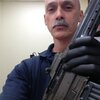I'm going to go against the flow here and say that there wasn't anything wrong with either the Arisaka or the Carcano designs. I think I would have preferred both in their 6.5mm versions.
What we need to remember is that we can't just take a look at one example and judge everything off of that example. Carcano rifles have gotten a bad rap due to non-spec ammo. Arisaka (type 99) have gotten a really bad rap from the last ditch rifles! I would rather have had an Arisaka Type 38 than anything bolt action other than an Enfield or a 1917 Enfield. I'd also rather have enbloc clips than stripper clips, assuming I could get fresh enblocs as expected when the rifles were designed.
The Mauser design (as everyone expects me to say...) is fabulous (which features the Arisaka, 1903, etc. borrow), but even the early war produced rifles were not as accurate as other rifles! 8mm Mauser is more powerful than necessary (as is everything else except the 6.5s fielded by the Japanese in the early war and the Italians and maybe .303 [these are not underpowered cartridges, but everything else really is more than necessary]).
So... what's the best? If I was a grunt, I'd want an Enfield. No, I'd want a Garand, because the grunts carrying Garands had the best artillery and air support of the entire war, in addition to the most generous supply of other stuff too. If the only thing I was considering was my small arm as a grunt and I was limited to a bolt-action I'd want an Enfield in .303. I don't think it's the best rifle, but it's probably the best combat rifle on the list. I think the Type 38 was the best rifle, but if the government is paying for new rifles when the headspace changes, I'd like a SMLE or variant thereof.
My list, from best to worst if I, as a grunt, had my choice based on the rifle and nothing else would be the following:
1. SMLE and variants thereof. Ten shots, aperture sights, lower recoil. Don't care about "fast cycling".
2. Arisaka Type 38. Good rifle, low recoil.
3. Carcano in 6.5. Low recoil.
4. 1917 Enfield. Good sights
5. 1903a3. Good sights
5.5 Type 99 Arisaka. Loses the benefit of the 6.5 cartridge, but still a good, strong rifle.
6. 1903 accurate, but not my favorite sights.
7. Mauser. Good mechanical design, but firsthand accounts seem to highlight inaccuracy. Sights are not great.
8. Mosin. Sticky. Rimlock is a possibility. Accuracy seems to have been better than the Mauser though.
Did I miss any important ones? Let me know and I'll put them in.
All rifles on my list are considered without using last-ditch examples and problems. Also, you've got to consider CORRECT ammo (especially Carcano). When it comes right down to it, the significance of differences between the rifles issued to troops is basically irrelevant. If you armed Nazi Germany and Imperial Japan universally with Garands it would not have helped much. I would even argue that if you could magically arm Nazi Germany and Imperial Japan universally with M-16s it wouldn't matter either.
I'd like light weight, low recoil, and high capacity in a service rifle. Durability is low on that list, as is accuracy. Once you get "good enough" on durability and accuracy scales, the differences between the different bolt action rifles pales to insignificance.
I still like Mausers though. Well... I actually like all of the ones on the list!














